






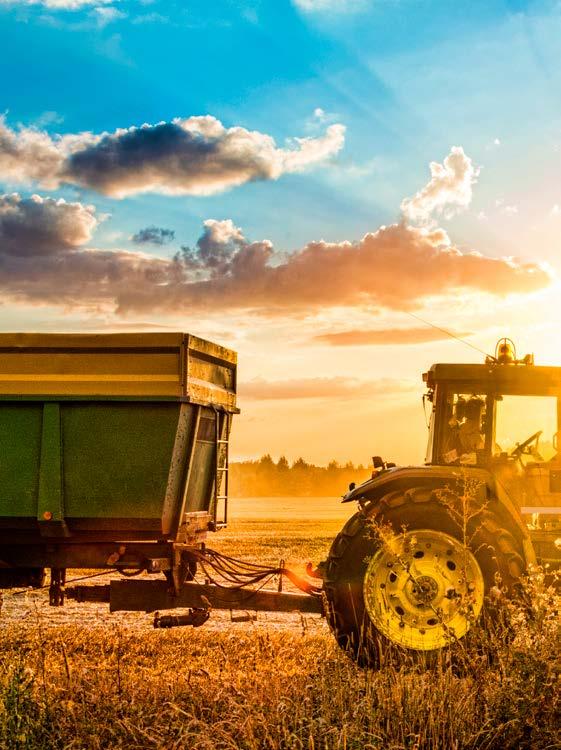
Drills are in the fields, flowers and hardy garden produce tentatively send up shoots, and calves laze in the warm Spring sun. New life is all around, and so is a sense of possibility.
Seemingly everything teeters on the edge of change, and Montana Farmers Union has many resources and tools to help you direct that change into success.
In this edition, learn about some of those available resources, as well as what makes cooperatives unique, perennials and pollinators, legacy planning, precision ag applications, and how to tap into Climate Smart Ag programs. Be inspired to try out some tractor seat friendly stretches and a few new recipes. In these pages, also meet your fellow members and learn more about the ways Montana Farmers Union is working to support you, including Membership Ambassadors’ continued grassroots efforts, grant opportunities, and Day and Summer Camps. In the coming months, several member gatherings are planned around the state. Take advantage of the opportunities to connect with Ambassadors and other members in your area!
Stay tuned to the website, the weekly e-news Boot Up, and Grassroots for more information about the many ways to get – and stay – connected with Montana Farmers Union and its work aimed at supporting family farms and ranches.



The “Product of USA” label on meat packaging will now mean what it says.
Secretary of Agriculture Tom Vilsack honored National Farmers Union by breaking the news at our recent annual convention, saying: “The Product of USA rule will now require packages of meat labeled with ‘Product of USA’ to be born, raised, and processed in the USA.” Additionally, if the package includes an image of the U.S. flag, the product must be born, raised, and processed in the USA.
Vilsack’s announcement is a great first step towards mandatory country of origin labeling. It is about time packers stopped lying by using the USA label on meat that was born and raised in foreign countries and only processed in the U.S.Vilsack explained that the USDA surveyed consumers on what “Product of USA” meant to them. Consumers logically thought it meant what it said. Furthermore, consumers said they were willing to pay more for beef and pork born, raised, and processed in the USA.
The new rule is a good starting point as it does enforce truth in labeling so what customers thought was true will now actually be true. However, “Product of USA” is a voluntary label, and I predict packers will quit using it and will go back to emphasizing the “USDA Inspected” label to mislead consumers.
At least the “USDA Inspected” label is not a lie, but it still misleads consumers by labeling foreign beef with a USDA label. That is why mandatory COOL is still important.
Vilsack’s labeling announcement was the latest step in a string of several the Biden Administration has taken to increase competition in the ag sector across federal departments.
Several other federal leaders spoke with us about their work to hold corporate monopolies accountable. We heard from Will McIntee, who is senior advisor for public engagement on rural, agriculture, and food, Assistant Attorney General on Antitrust Jonathan Kanter, and Chair of Federal Trade Commission Lina Khan about the work they are doing to prevent consolidation like the Kroger/Albertson merger, to reign in credit card fees, and to address anticompetitive practices of the monopolies.
Many of the rules and directives from the Biden Administration have been in line with NFU’s Fairness for Farmers campaign, and many of the speakers referred to the campaign, showing their awareness and commitment to tackling anti-competitive practices.
When visiting with many of the longtime Farmers Union members, neither they nor I could recall a NFU convention getting more recognition and support from any other president or their administration. One hundred and twenty two years of advocacy for family farms has found an effective ally in President Biden.

MONTANA FARMERS UNION
PO BOX 2447
300 RIVER DRIVE NORTH, STE 1 GREAT FALLS, MT 59403
PHONE: (406) 452-6406
1-800-234-4071
FAX: (406) 727-8216
mfu@montanafarmersunion.com www.montanafarmersunion.com
Board of Directors:
Walter Schweitzer, President
Rollie Schlepp, Vice President, Conrad
Jan Tusick, Secretary/Treasurer, District 6, Ronan
Erik Somerfeld, District 2, Power
Jeff Bangs, At-Large Director, District 1 & 2, Inverness
Tom Clark, District 1, Fort Benton
Brett Dailey, District 4, Jordan
Trent Stoltz, District 5, Pompey’s Pillar
Ben Peterson, At-Large Director, Judith Gap
Sig Rudie, At-Large Director, District 3 & 4, Fairview
Sarah Degn, District 3, Sidney
MFU Staff:
Walter Schweitzer, President
Matt Rains, Chief of Staff
Jan Johnson, Office Mgr., Assistant Secretary/ Treasurer
Kari Kester, Administrative Assistant
Rachel Prevost, Government Affairs Director/ Member Svcs.
Matthew Hauk, Education Director
Heather Wendell, Communications Director
Alice Miller, Press Relations Specialist
Samantha Ferrat, Membership Ambassador
Eleanor Dutton, Membership Ambassador
Carissa McNamara, Membership Ambassador
Mary Jenni, Membership Ambassador
Skylar Williams, Membership Ambassador
Jeri Copenhaver, Membership Ambassador
Copyright © Montana Farmers Union, 2024 MFU Magazine is the official publication of the Farmers Educational and Cooperative Union of America, Montana Division.
MFU reserves the right to reject any advertisements. Membership: $50.00 per year
Montana Farmers Union Magazine is published quarterly.
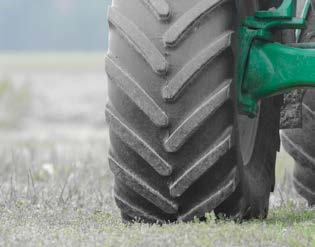
Montana Farmers Union is the oldest & largest family farm organization in the state who represents family farmers & ranchers.
MFU is working for family farms, ranches, rural communities, & supports its members through: strong education programs for both youth and adults, advocating member-driven policies & legislation at the state and federal level, & cooperation through producer-owned co-ops.
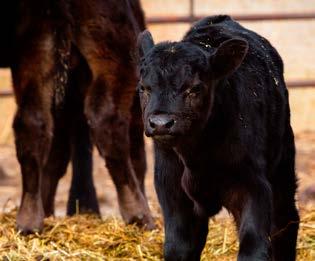
Copy Editor: Alice Miller, Jan Johnson & Heather Wendell


Montana is known for its vast landscapes and diverse ecosystems and is also home to a wide variety of pollinators and perennial plants. Pollinators, including bees, butterflies, moths, beetles, flies, birds, small rodents, and bats play a crucial role in our ecosystems, providing essential agricultural and economic services. They are responsible for pollinating numerous crops vital to our food supply and contribute to the diversity of plant communities. By transferring pollen from one flower to another, they facilitate the reproduction of plants, ensuring the production of seeds and fruits.
While numerous animals participate in pollination, bees stand out as the most significant. Their body structure, characterized by branched hairs, renders them exceptionally efficient at transferring pollen from one plant to another. Honeybees are the most recognizable bee species for many; they are unique in several respects. No other bee species produce a significant quantity of honey, and none, apart from bumblebees, live in large, social colonies in North America. Most non-social bee species are docile and infrequently sting. They exhibit a wide range of shapes and colors and vary in size from that of a small seed to the width of a golf ball. Also, you might encounter green metallic bees nesting in underground tunnels, blue carpenter bees drilling holes in plant stems, and even parasitic bees infiltrating other bees’ nests. All bees subsist exclusively on pollen and nectar from flowers, and their frequent flower visits render them invaluable pollinators.
Native plants, being well-suited to local soils and climates, typically serve as optimal food sources and refuge for native pollinators. Integrating native wildflowers, shrubs, trees, vines, grasses, and other flora into any landscape supports a variety of wildlife and enhances soil, water, and air quality. Moreover, most native plants thrive in suboptimal soils and necessitate minimal irrigation. Abundant and healthy populations of pollinators can improve fruit set and quality and increase fruit size. In farming situations, this increases production per acre. In the wild, biodiversity increases, and wildlife food sources increase.
Pollinators and perennial plants have a mutually beneficial relationship. Pollinators rely on the nectar and pollen provided by perennial plants for food, while perennial plants depend on pollinators for their reproduction. This relationship is essential for the survival of both groups and contributes to the overall health of Montana’s ecosystems. Despite their importance, pollinators and perennial plants in Montana face several challenges. Habitat loss, pesticide use, climate change, and invasive species are some of the factors that threaten their survival. Several organizations in Montana, such as Montana State University Extension, Natural Resource Conservation Service, Native Plant Societies, Conservation Districts, Montana Farmers Union, and many other initiatives are working to conserve pollinators and perennial plants. These efforts include habitat restoration, public education, and research on pollinator populations.
By raising awareness and implementing conservation
measures, these organizations are helping to ensure the continued presence of pollinators and perennial plants in Montana.
These conservation efforts are essential for safeguarding these vital elements of Montana’s biodiversity, and you can play a role in these initiatives. The following list outlines several considerations to ensure your actions positively impact bees and other pollinators.
• Refer to the following QR Codes to identify which plants offer benefits to pollinators based on your specific landscape.


• For pollinator gardens, it is recommended to incorporate a blend of flowering plants with varying colors, textures, and sizes to attract a broad diversity of pollinators. It is important to note that there are both generalists and specific pollinators. Generalists could forage on a wide range of flowers, whereas specific pollinators are more selective and tend to prefer plants from certain families, genera, and even species.
• Don’t use plants that lack nectar or pollen structures or have complex features that hinder bees from accessing the nectar sources that don’t have nectar or pollen structures or those that have complicated features that make it difficult for bees to get to the nectar source.
• Native plants are essential in pollinator gardens regarding their adaptability and relations with pollinators; however, non-native plants can also have a lot of overlap and can attract different types of pollinators so that you can mix it up.
• If you need to spray, always follow the label instructions.
Continued on next page
plants – Rocky Mountains Native plants – Northern PlainsContinued from previous page
Be aware of application restrictions of pollinators. Use low-residual or highly selective pesticides for a specific type of insect, so they have low toxicity for others. Do not spray flowering plants or wait until the blooms have gone.
Pollinators and perennial plants are integral parts of Montana’s ecosystems, playing essential roles in plant reproduction and biodiversity. By understanding their relationship and the challenges they face, we can work together to conserve these vital components of our natural world. Through conservation efforts and public awareness, we can help ensure the continued presence of pollinators in Montana’s current and future agriculture and landscapes.
Resources:
The ABC’s of Plants for Bees!
The ABC’s of Plants for Bees! – The Garden Professors™
Xerces Society Plant Lists: https://xerces.org/pollinator-conservation/pollinator-friendly-plant-lists
Gardening for Native Bees in Utah and Beyond https://extension.usu.edu/pdfs/sustainability/files/Gardening-for-Native-Bees-in-Utah-and-Beyond.pdf
Protecting and enhancing pollinators in urban landscapes for the US North Central Region https://www.canr.msu.edu/uploads/236/78920/ProtectPollinatorsInLandscape_FINAL-HigherRes.pdf
Supporting Bees in Your Garden and on Your Farm FS1280: Supporting Bees in Your Garden and on Your Farm (Rutgers NJAES)
Selecting Plants for Pollinators https://www.pollinator.org/pollinator.org/assets/generalFiles/Great.Plains.Palouse.Dry.Steppe.2020.ver2.pdf
EPA Actions to Protect Pollinators https://www.epa.gov/pollinator-protection/epa-actions-protect-pollinators
 Photo courtesy of Abiya Saeed
Photo courtesy of Abiya Saeed
Family farmers and ranchers from Montana traveled to Scottsdale, Ariz., March 10-12 for the 122nd National Farmers Union convention. Delegates and attendees heard from nationally known speakers, administration officials, and even a comedian. NFU President Rob Larew, gave a “State of the Union” speech during the welcome banquet and told attendees that NFU is strong.
In the past year, NFU has increased membership by more than 12,600 members, as well as continued the impactful Fairness for Farmers campaign. This campaign and meetings with administration officials in the Department of Justice, the Federal Trade Commission, and the Department of Environmental Quality have elevated issues of importance to farmers, like right to repair and anti-competitive practices and market concentration.
Officials have achieved impressive results like fines against corporate monopolies for anti-competitive practices, decisions strengthening right to repair, and rules on food labeling to strengthen access to markets. Furthermore, there is great momentum, and many efforts are on track, to help improve opportunities for family farmers in the future. MFU board member Jan Tusick echoed this sentiment when she said, “The convention brought a dialog of hope for the family farm and intensified the importance of civic engagement to guarantee the current administrations’ policies continue into the next four years.”
Secretary of Agriculture Tom Vilsack also was a presenter during the convention. He was generous with his time, giving NFU an hour and a half and answering many questions.
He used his address to announce a Product of the USA labeling rule that requires packages of meat labeled as “Product of the USA” to be born, raised, and processed in the USA. Product with packaging that includes an image of the U.S. flag must also be born, raised, and processed domestically.
MFU President Walter Schweitzer called the rule a “great first step” toward mandatory country of origin labeling and said the rule will give U.S. ranchers credit for their highquality product and give consumers confidence because of truthful labels. (Read more about the rule in Schweitzer’s message in the edition on Page 4.)
Vilsack also addressed the Farm Bill. While farmers and ranchers would like to see a Farm Bill passed, he emphasized that we need the right Farm Bill. The administration has invested record funding toward
agriculture through various funding mechanisms unrelated to the Farm Bill. Money for conservation and water projects is quadruple the amount previously available. In the past, most applications were rejected due to funding constraints and now most are funded. There is funding available for climate smart agriculture, biofuels, renewable energy, and value-added processing. Efforts have been made to increase market opportunities through local and regional food hubs and institutional food buyers like schools, food banks, and prisons are incentivized to buy American.
Vilsack’s speech struck a chord with MFU members, with many considering it a highlight of the convention.
“I enjoy being a part of a large organization that believes in the integrity, influence, leadership, and stewardship of our agriculture and our economic prosperity. As a delegate at the convention, we listened to and debated policy that helps the family farm. I enjoyed the connection with other NFU members, and I really enjoyed listening to the Secretary of Agriculture Tom Vilsack,” MFU Flathead Local member Heather Siderius said.
In addition to informational speakers, half of the convention schedule was dedicated to policy considerations, debate, and votes. Policy informs the organization and dictates which issues NFU’s president and staff will promote or oppose. Montana’s delegation played an active role during policy consideration.
For instance, there was a proposal to change “Tribal Nations” to “Native American” in our policy book. The proposal was not accepted, and delegates realized that a committee should be formed to create acceptable wording. Montana delegate Carah Ronan (Northern Cheyenne) took the lead on that committee, becoming the spokesperson proposing each change throughout the policy book wherever it was needed.
“To be able to attend my first NFU conference as a delegate was a true honor, even more so to come together with Montana’s own April Martin (Northern Cheyenne), State President Kaipo Kekona (Hawaii), and Tracey Raymond (Northern Navajo), and others to create appropriate language that is more inclusive to all,” Ronan said. “It is a step in the right direction to the future growth of NFU as well as local organizations. I look forward to continuing the conversations and will work to make sure all in agriculture can find the home and support of Farmers Union that I have over the past few years.”

Another issue that was discussed at length was federal farm subsidies. As a family farm organization, NFU is concerned that 85 percent of farm subsidy money goes to the largest 15 percent of farms. Numerous policy proposals discussed methods of redirecting government funding. Proposals included caps, tiered systems of reduced payouts to the large corporate farms, changes in IRS forms and more. Most proposals generated spirited debate but failed to pass. However, a general statement passed which encourages protections of small and midsize farms through tight eligibility requirements and caps on federal funds for large industrial farms. One proposal would have altered the way the Farm Service Agency Credit Programs evaluated retirement accounts. The change was opposed by Montana delegate Sarah Degn who said, “I came back to the farm with a little bit saved in a retirement account from a previous career. Having to liquidate that account to finance my farm or call that an asset to acquire a loan would have incurred a huge penalty. Farmers deserve to save for retirement too.”
Tammy Copenhaver also shared her story of having a career separate from agriculture until she and her husband started ranching in their 50s. Consequently, she has a retirement account and does not believe she should have to risk it to ranch. Attendees agreed and the proposal failed.
Sometimes national policy must be expanded because regional or state needs have become relevant nationally. Erik Somerfeld, an MFU board member and veteran delegate, proposed and successfully passed a new policy.
“MFU has had policy opposing the removal of dams on the Snake and Columbia River systems since 1999. Until the last year or so, we hadn’t been worried that this could happen. Now that it is possible, we passed policy at
National to protect the hydropower produced and the grain shipped by those river systems,” Somerfeld explained.
Whether it was networking with NFU members from around the country, learning from industry experts, hearing updates from Biden Administration officials about their headway tackling anti-competitive practices, or helping craft policy to direct the organization in the coming year, MFU delegates left convention hopeful, inspired, and more dedicated to the success of family farms and ranches than ever.
“I’m inspired and reminded why farming is so important. I come home ready and eager to go to work. This administration is listening to our concerns and actually taking action,” MFU member John Wicks said. “It’s refreshing to see the work of all these people come to fruition for family farms, and it shows that being involved is important and is the only way to get results.”
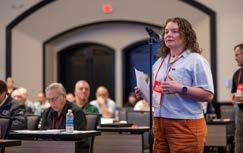 Back L to R: Courtney Kibblewhite, Oscar Mayorga & Lisa Wade-Mayorga, Mark Siderius, Walter Schweitzer, John Wicks, Tammy Copenhaver, Erik Somerfeld, Trent Stoltz, Holly Stoltz, Shane Gagnon, Colter Brown.
Front L to R: Rachel Prevost, Phillip Prewett, Heather Siderius, Charlotte Kelly, Melissa Wacker, April Martin, Sarah Degn, Carah Ronan, Jan Tusick, Cindy Palmer
Back L to R: Courtney Kibblewhite, Oscar Mayorga & Lisa Wade-Mayorga, Mark Siderius, Walter Schweitzer, John Wicks, Tammy Copenhaver, Erik Somerfeld, Trent Stoltz, Holly Stoltz, Shane Gagnon, Colter Brown.
Front L to R: Rachel Prevost, Phillip Prewett, Heather Siderius, Charlotte Kelly, Melissa Wacker, April Martin, Sarah Degn, Carah Ronan, Jan Tusick, Cindy Palmer

Several Montana Farmers Union members and Locals received awards for their efforts on behalf of family farmers and ranchers during National Farmers Union’s 122nd Anniversary Convention held in Arizona.
The Liberty/Toole County, Flathead, and Teton County locals received leadership awards for their work engaging members on behalf of MFU and NFU (below center), while Melissa Wacker, a Farmers Union Insurance agent in Hardin, received a membership award for her efforts to recruit MFU members (below left),
Charlotte Kelly from Chester received the Bruce Miller Award, which is presented to a member who demonstrates the mission and vision of National farmers Union daily (below right)
Individuals who received the Bruce Miller award display a true passion for family farming and rural America, while promoting the work of Farmers Union.They attract additional members, invite guests to get involved with the organization and build public awareness of Farmers Union.
“I was pretty shocked,” Kelly said about her initial reaction.
“I didn’t think I was making that big of an impression with that many people, but it’s pretty humbling” she added.
Her family’s involvement in Montana Farmers Union stretches back to the organization’s early days and Kelly’s grandmother traveling by horseback to tell neighbors when to meet. Kelly has been an integral part of MFU Women's Conferences' success, as well as organized a long-running Day Camp focused on agriculture and cooperatives in Liberty County.
Currently, her family leases their land to other producers, but Kelly said it’s important to remain engaged and aware of what farmers and ranchers need to be successful, and it’s important to teach kids about agriculture. Even reaching one kid to get them interested in agriculture is worth the work of organizing the Day Camp.
“I love doing it,” Kelly said.
And she loves Montana Farmers Union and its mission to support family farms and ranches, saying,“We’re working for the better of everybody.”





If you would like to share your photos, please send them to us. We would love to see them! hwendell@montanafarmersunion.com
David Allen Lil Valley Ranch WINNER
Over the past two years, I have had the honor of helping develop a program in precision agriculture at Montana State University. Starting in the fall of 2024, I will continue this process as a member of a new team of four tenuretrack faculty. The need to improve precision agriculture in Montana is close to my heart. I grew up on a farm in Fairfield, Montana. This experience instilled in me a deep connection to Montana Agriculture and an appreciation for the challenges faced by producers in our state. As a child, I experienced the hard work and dedication required to farm, along with the annual heartache due to the uncertainty of each season. These experiences also shaped my understanding of the need for innovative approaches to farming, which is found in the adoption of precision agriculture technologies that allow us to reduce annual uncertainty.
When discussing precision agriculture and its application in Montana, we first need to define the practice in terms relevant to Montana’s cropping systems. Many potentially conflicting terms are used in the precision agriculture landscape, such as site-specific management, GPS guidance, automation, variable rate technology, the Internet of Things, and digital agriculture. These terms can confuse the approach to this subject. However, most of these terms discuss the different technologies that are tools of precision agriculture rather than the core management process. At its core, precision agriculture is a process of measuring and responding to the variability within agricultural systems to optimize output while preserving resources. With this definition, many say we are already doing this, just not with the latest technology. To this, I
would say, good! Let’s see where we can take this with technological tools that improve our ability to track and manage variability efficiently. Some are relatively new tools, such as automated spot spray systems, satellite and aerial imagery, and digitally assisted scouting with cell phones. Others are older technologies that are currently underutilized, including yield monitoring, soil sampling, and variable rate technologies (VRT) for nutrient applications.
I often hear these technologies don’t fit how we farm in Montana or only apply to large farming operations. I also often hear that the technology is too expensive, it wasn’t developed for our crops, and water is our limiting factor; therefore, precision agriculture tools don’t work for us. This has been true in the past, particularly concerning the high cost of the tools. However, the technological landscape has evolved, bringing these systems within reach of Montana farms of any size. However, we are still in the early stages of adopting precision agriculture into Montana’s farming culture.
This early adoption stage in Montana is mirrored in a recent USDA report titled “Precision Agriculture in the Digital Era: Recent Adoption on US Farms.” This report shows a divide in adopting precision agriculture practices for different crops. Some technologies, such as GPS guidance and autosteer, have nearly equal adoption across all surveyed crops, between 60 and 70% of surveyed farms. This is unsurprising as implementing GPS guidance provides immediate labor savings and efficiency benefits and is foundational to other precision agriculture practices. Other practices like VRT or satellite imaging see lower

adoption and strong divides between crops. In corn production, VRT has an adoption rate of nearly 40%; in wheat production, VRT use is reported by only 20% of the surveyed farms. While freely available, satellite imagery is largely underutilized, with only 7% of corn production and 3.5% of wheat production reporting its use. The divide in adoption between different crops may have its roots in the availability and cost of crop-specific technologies combined with the production costs of these crops. However, this study demonstrated that farms adopting these technologies report significantly higher yields, in the case of wheat, up to 48% as a national average. While the results show strong statistical significance, this correlation does not imply causation, and further study is warranted. If this trend continues in Montana has yet to be studied. The factors hindering widespread adoption in cropping systems like Montana are only speculative and, therefore, a question that needs to be answered.
The costs of enabling technology for precision agriculture have significantly decreased as high-accuracy GPS has become widely available. It is still the case that most technologies start in corn production and only find their way to wheat and other grains as a secondary market. However, this cannot fully explain the lower adoption rates in grain. Part of this lag is likely due to limited knowledge about the applicability of the technology in Montana’s cropping system. In response to this, Montana State University has started the creation of a precision agriculture program. This program is a public-private partnership supported by state funding and private gifts. This program aims to educate the next generation of
MSU graduates in precision agriculture and associated technologies, study the application of these technologies in Montana’s cropping systems, educate Montana producers on the appropriate tools, and develop or adapt new tools to fit the needs of our cropping systems.
Precision agriculture is often viewed as a method of maximizing yield. This view is incomplete, as precision agriculture represents a critical evolution in farming and land management practices, enabling multi-faceted optimization strategies that focus not only on yield but also on optimizing crop production and quality while minimizing inputs, labor, time, and mental strain. This approach leverages advanced technologies such as GPS mapping, soil sampling, satellite imagery, and yield and quality mapping to ensure crops receive what they need for optimal growth within a particular growing season. One example of such practices is site-specific herbicide applications, which reduce the costs of the spray, improve environmental quality, and reduce labor. Another example is using yield, vehicle, and economics data to identify field areas with high labor and low or even negative returns. By converting these areas to native grasses or pollinator habitats, the total produced crop is reduced. However, profit margins are increased, labor is reduced, and inputs are reduced. The application of precision agriculture tools in this manner will improve our understanding of our lands, allowing us to reduce waste and enhance sustainability. I look forward to joining Montana producers as we all explore the adoption of these technologies in our cropping systems.

If you missed the legacy planning presentation during the February 2024 Montana Farmers Union Women’s Conferences held in Miles City and Fairmont Hot Springs, you will be glad to know MSU Extension has a variety of ways you can receive the information.All methods allow you to learn about legacy planning at your own pace 24/7.
Whether your favorite learning method is reading or viewing, MSU Extension has the approach that works best for you. First, MSU Extension has a website with more than 50 estate planning MontGuides: https://www.montana.edu/estateplanning/ eppublications.html. Scroll down the list to find those of specific interest to you. Read online or print them out so you can highlight information applying to you and your family.The most requested MontGuides are Wills, Getting Started with Estate Planning,Who Gets Grandma’s Yellow Pie Plate, Nonprobate Transfers, and Power of Attorney (Financial).
The majority of the MontGuides are specific to the laws of Montana, and present an opportunity to learn individually or as a group.A group could even select a bunch of MontGuides as a “book” for a future book club meeting.Then I could be “present” through Webex to add to the discussion and respond to questions not answered in the MontGuides as a fun way to learn together!
One common misconception I have found during my presentations is people think they can will away their property held in joint tenancy to someone other than the surviving joint tenant. Let’s say a rancher with two children remarries without a premarital agreement. Lacking legal advice, he places the ranch in joint tenancy with right of survivorship with his new wife.
Later, he writes a will with a provision leaving the property to his two children. By placing the property in joint tenancy with his new wife he has disinherited his two children.A will cannot undo the joint tenancy contract. She inherits the property.Assume she is killed in an accident.The property she inherited passes to her
children.The rancher has unintentionally disinherited his children. He needs to get his property back in his name as sole owner.An attorney could explain the benefits of a QTIP trust that would provide income for his new wife and a home for her to live in. Upon her death the land and home could pass to his children if that is what the rancher wants. He needs to set his legacy planning goals and work with an estate planning attorney to use the best tools for his situation.
Probate is not needed for contractual property to be transferred to the beneficiaries.The court-appointed personal representative has no power or duty to administer nonprobate property. In other words, the contractual arrangement decides priority for distribution of the jointly held property.
Another example:Those appointed as beneficiaries in an insurance policy receive the proceeds upon the death of the insured regardless of any provisions in the will distributing those proceeds.The only circumstance when a will decides the distribution of life insurance proceeds is when the estate is the beneficiary.Then the proceeds are part of the estate and distributed according to the provisions in the deceased’s will.
Other legacy planning tools ranchers and farmers are often unaware of include PODs,TODs,TODDs and the MV13 form. A POD is a payable on death beneficiary designation that you can place on your checking and saving accounts, and certificates of deposits.The forms are available at your respective financial institutions.
A TOD is a transfer on death registration for stocks, bonds, and mutual funds. Like the POD the registered beneficiary receives the asset upon death without probate.The asset automatically passes to the POD or TOD beneficiary. But what if the POD/ TOD beneficiary dies with you? Consider having a secondary beneficiary, or, make the estate as the beneficiary and write a will to convey the property to whom you want.
Don’t forget those US Savings Bonds you placed in your safe deposit box.You can choose either a coowner or a beneficiary for the bonds.You can name only one beneficiary on each of those. For EE bonds, you can change the beneficiary at any time, without any permission from or notification to the original beneficiary.
A TODD is a transfer on death deed for real property. The owner files the form with the clerk and recorder in the county where the property is located. Real property with a TODD does not go through the probate process.An MV13 is a beneficiary designation form for a vehicle or vessel.The 2023 Montana legislature included manufactured and mobile homes as vehicles: https://mvdmt.gov/wp-content/uploads/2023/10/MV13Beneficiary-Designation-for-Vehicle-or-Vessel-TitleFillable.pdf.
The second resource MSU Extension has available for learning about legacy planning is a wealth of webinars.You can watch three years of Fabulous Fridays. Enticing titles include: How the Use of Joint Tenancies Can Disinherit Your Kids,Tools for Avoiding Probate and Save Money for your Heirs, Selecting an Attorney in Montana to Develop an Estate Plan or Administer an Estate (Probate), and What’s the Difference Between a Revocable Trust and a Testamentary Trust.These and more webinars are available here: https://www.montana.edu/estateplanning/ fabulousfridays/.
The Wednesday Wisdom webinars were a collaboration between MSU Extension and AARP Montana.You have choices of what topics to view such as: Is your will worth the paper it’s written on?, and What you can and cannot do with a Written Will at: https://www.montana.edu/ estateplanning/wednesdaywisdom/.
A third method for learning about legacy planning is the Dying Without a Will in Montana interactive website. If you are wondering who receives your property when you die, try out the website by clicking on answers to questions about your marital status, whether you have children, grandchildren and so on.Then, voila! You have a drawing showing who gets your property after you die. Check it out here: https://www.montana.edu/ dyingwithoutawill/.
A caution: Examples at the website assume the deceased held the property in sole ownership.When the deceased titled property in joint tenancy with right of survivorship by operation of law the property passes to the surviving joint tenant. But what happens to the property if both joint tenants die in the same accident? That is where a written will is of benefit.With a will, the joint tenants can decide who receives their property if all joint tenants die in the same accident.
Legacy planning lets you — not Montana — dictate how your property passes after you die.You are the one who can take charge by learning about what tools let you have that control.

 By Matthew Hauk,
By Matthew Hauk,

The Montana Farmers Union summer camp season is coming soon. Spring is approaching, and the Arrowpeak Lodge facilities will be beautiful. Green grass and flowers will be blooming in the Highwood Mountains where the Montana Farmers Union Camp is located. There have been several upgrades to the camp, including a makeover of the old boys’ dorms which allows this historic building to be used again to house campers. With this additional bed space, more spots will be opened up for campers to attend each camp. There is also a new shop building named the “Firehouse” which will house a fire truck that can be used in an emergency fire situation.
Each Montana Farmers Union Camp will have activities that include the usual staples of camp such as dancing, hiking, plant identification, arts and crafts, and the ever-popular gaga ball. There will be some new activities such as building a wooden bench for KP Groups to put their own brands on and even some roping lessons. There will be new speakers with more cattle-based learning including a seminar on low stress cattle handling. There will also be activities where students figure their own feed rations. Adding to the new greenhouse bought last year, we are constructing a garden with vegetables that will be used by the cooks for meals. We may even have some chickens whose eggs will also be used to make meals for the camp. This will be the camp’s own version of farm to table. Themes for camp will be Surfer versus Biker, Ken versus Barbie, and Tropical. It is always so fun to see the amazing outfits that the campers come up with for these days. The Senior Advisory Council and Junior Advisory Council (SYAC and JAC) worked hard at developing some of these great, new ideas for the camps. This year’s camp theme will be “Aim to Tame,” and it should be a fun one. Registration is open!
As always, we are looking for people to fill positions at camp. We are in need of camp counselors, cooks, caretakers, nurses, and a youth camp director. To apply for these, check out our website and look at the job descriptions. These are great positions where you get to spend time up in the mountains around enthusiastic kids attending camp and see many wild animals including deer, yellow bellied marmots, birds, turkeys, and moose.
The cost for camp is $100 for members and $150 for nonmembers for all camps except the Mini-Junior Camp, which is $75 for members and $125 for non-members. This is great value as even groceries for an energetic youngster can cost more than that for a week. At our last SYAC meeting, several of the members raved about how great the food was last year.
There has been a waiting list for camps the last several years, so get registered quickly. Get ready for a fun and educational camp season where campers learn about agriculture and cooperatives while making lifelong friends!



Junior 1 Camp JUNE 9-13
Ages 8-11
Mini-Junior Camp JUNE 16-18
Ages 7-9
Teen 2 Camp
JULY 28-AUG 2
Ages 11-14.
Junior 2 Camp JULY 7-11
Ages 8-11


Senior - Teen 1 Camp
JULY 14-18
Ages 14-18


 Camp 2023 photos & New construction of "the Firehouse:" four bedrooms, three bathrooms, living space, laundry room, firetruck bay, shop & garages
Camp 2023 photos & New construction of "the Firehouse:" four bedrooms, three bathrooms, living space, laundry room, firetruck bay, shop & garages

More than 50 towns have rethought and reinforced what makes them unique and engaged volunteers to further enliven their communities through Reimagining Rural.
The program, made possible through support from the Montana Community Foundation, the Montana Department of Commerce, and others, includes keynote speakers and facilitates community conversation, along with a presentation on rural brain gain and the desirability of rural living.
“Reimagining Rural has proven to be a catalyst for increasing volunteer engagement and action in the rural, sparsely populated communities that participate.The program provides a reason to come together to discuss the future of the town as well as some structure for community conversations,” said Tara Mastel, who works to support community vitality and leaders in her role as Program Lead for Community Vitality at Montana State University Extension.“The program application requires communities to think broadly about who to invite to the events from their community which has resulted in local gatherings with a diverse array of community leaders.”
Earlier this year, 11 communities worked through the Reimagining Rural program and experienced high turnout – 40 in West Yellowstone and nearly half of Lima’s 125 total residents.
Some of the communities, like Forsyth, have hosted Reimagining Rural events multiple years and are seeing new faces each time.
“I think having this neutral community event is an entry point for people new to town or new to being involved, so they take the invitation to be involved,” Mastel said.
“Reimagining Rural all came to be from an idea that Jennifer Anderson had. Being that she was the local Extension Agent, and who also did Community Development, there was no way that Forsyth wasn't going to participate.And I'm so glad that's the case! With seeing the a-ha's, the ideas, the conversations coming from Reimagining Rural, I just cannot picture Forsyth not participating as long as this program is being offered by MSU Extension Community Vitality,” said Samantha Beyl, administrative assistant for the Rosebud and Treasure counties MSU Extension Office.
Beyl, who also serves on the Chamber of Commerce board and organizes the Reimagining Rural sessions, said roughly 25 people participated in this year’s sessions, with about half of the attendees being new to Forsyth in the past five years, including her. “I left so excited with the people who attended during the three sessions, knowing that new people had been part of this fourth round and have witnessed the excitement, hearing about ideas, dreams, visions, and people genuinely excited and looking forward to what's coming next in the town we live in, work in, and love.”
The range of participants in Reimagining communities from longtime residents to newcomers confirms what data shows. People are moving to Montana’s rural communities, not just areas like Missoula and Bozeman.
The Reimagining Rural program helps invigorate a community’s volunteer base, facilitating connection between residents – both longtime and new.
“It creates a reason to get together to jump start getting something done in town. It has been useful for many communities who have wanted to get going on something but struggled to get people engaged on their own,” Mastel said.
Forsyth participants have used the sessions as a springboard to become a Montana Main Street Partner and more recently forming Forever Forsyth, Inc., which will continue to pursue projects to enhance the town.This year’s Reimagining participants decided to apply for Seed Grant funding to install a disc golf course in a local park.
With an invigorated volunteer base, projects like the ones in Forsyth are possible, as well as a refreshed view of rural. “Rural is cool. Rural is desirable. Just because Forsyth doesn't have XYZ doesn't make it sad or less than another town that does.We have so many things to offer, great businesses, kind people, desirable services, and the most beautiful outdoor surroundings for fishing, hunting, agate hunting, farming, ranching, and the list goes on and on,” Beyl said, encouraging people to become involved in Reimagining Rural.
“Become part of the conversation, help us dream bigger,” she said.
Learn more about Reimagining Rural and other Community Vitality work here: https://www.montana.edu/extension/ communitydevelopment/reimagine-rural.html.
(Right) Forsyth residents participate in a Newcomers Event held after being identified as a way to foster connection through the town’s participation in Reimagining Rural.


"Give
Anaconda
By Tracy McIntyreMCDC
DirectorBelgrade
Belt
Billings
Bozeman
Bridger
Broadus
Butte
Chester
Choteau
Circle
Stefanie Thompson: 563-5991
Craig Parker: 388-6774
Matt Triplett:952-0451
Judd Long: 252-9391
KJ Fauth: 969-2282
Art Hoffart: 586-6230
Dean Derby: 556-0893
Trent Leintz: 551-2163
By MFU STAFFWesley Schwend: 662-3930
Jesse Fleming: 436-2115
Mathew Luedtke: 270-5304
Megan Hedges: 759-5150
Scott Allaire: 466-5146
Kaylen Lehner: 485-3303
Coeur d" Alene
Conrad
Cut Bank
Dillon
Fairfield
Forsyth
Froid
Glasgow
Great Falls
Hamilton
Hardin
Havre
Helena
Production
Director
Jeff Dow: 799-4096
Flathead Insurance 208-667-7485
Dirk Elings: 271-7047
Ashley Vanek: 873-2249
Judy Siring: 683-2365
Sara Nye: 683-1250
Matt Luedtke: 467-3444
Donna Manuel-590 0866
Watts Agency: 346-1196
Austin O’Dea :766-2205
Brady Burgess : 228 8282
Eric Hinebauch: 453-8413
Jeff Thill: 452-7283
Aeric Reilly: 570-5853
Kyle Tschetter: 836-7261
Bryan Jones: 363-6583
Melissa Wacker: 665-1867
Meagan Kinsella:265-2693
Alex Thornton:879-2028
Todd Crum: 443-4630
Director
East Helena
Hingham
Hobson
Kalispell
Laurel
Lewistown
Libby
Livingston
Malta
Miles City
Missoula
Plains
Polson
Ronan
Ryegate
Seeley Lake
Scobey
Shelby
Sidney
Sunburst
Terry
Thompson Falls
Whitefish
Wolf Point
Eric Hinebauch: 437-2053
Alissa McClendon: 397-3146
Ray Lipp: 397-3146
Shawn “Tater” Erickson: 366-1287
Flathead Insurance: 752-8000
Randy Bloom: 257-1252
Lorna Olson: 628-6649
Raleigh Heitzman: 538-8736
Bruce Marshall: 538-2331
Colleen Wood: 293-6228
Cole Mauch 222-7151
Shane Anderson: 654-1589
Tayler Kennedy: 874-2560
Watts Agency: 874-1804
Andre Marcure: 543-7184
Ben Barker: 721-2540
Josh Rollins: 830-3073
Pam Jacobsen: 721-0599
Tom Monaghan: 926-2552
Lisa French: 826-4633
Andrew Luedtke: 837-1395
Andrew Luedtke: 676-0173
Audrey Stoican: 568-2336
Tom Monaghan: 677-7400
Matt Stentoft: 487-2629
KW Insurance: 424-8480
Russ Seubert: 434-5211
Cathy Hintz: 488-8326
KW Insurance: 937-6950
Watts Agency: 635-5782
Lisa French 827-3221
Rial Gunlikson: 862-4700
Jesse Fleming: 653-2200
Chris Strand: 871-2260 Ryan Kuntz: 581-4493
Spring means tender shoots of greens and more tasty harbingers of summer produce to come.
In this edition, we share recipes that take full advantage of the spring bounty, whether it’s greens or eggs or rhubarb, including a surprising way to use thinned carrot tops from MFU Membership Ambassador Mary Jenni.
Have a favorite recipe? Maybe it’s the tried and true one the harvest crew always enjoys, or maybe it’s a pie made with freshly picked summer berries! Share your favorites at hwendell@ montanafarmersunion.com to be featured in the Summer Edition Farm to Table section!



Submitted by MFU Staff
10 oz baby kale or torn kale
Salt & Pepper to taste
1/3 C shaved parmesan cheese
6 Tbs olive oil
2-3 cloves garlic
3 Tbs lemon juice
2 oz anchovies
2 tsp Dijon mustard
Blend olive oil, garlic, lemon juice, anchovies, mustard, salt, and pepper in a food processor until smooth. Toss kale with dressing. Top with parmesan cheese. Add croutons and grilled protein of choice if desired.

Submitted by MFU Staff
4 Garlic Cloves (minced)
½ C Chicken Broth
½ C White Wine
Salt & Pepper to taste
6 C Swiss Chard (chopped, about 6 ounces)
½ C Parmesan Cheese (Shaved)
8 ounces Uncooked Angel Hair Pasta
8 Bacon Strips (chopped)
Cook pasta according to package directions; drain. Meanwhile, in a large skillet, cook bacon over medium heat until crisp, stirring occasionally. Add garlic; cook one minute longer.
Add broth, wine, salt and Swiss chard to skillet; bring to a boil. Cook and stir 4-5 minutes or until chard is tender. Add pasta; heat through add parmesan cheese then toss to combine.

Submitted by
Mary Jenni, MFU Ambassador6 slices of bacon, with reserved grease
1 Tbs sugar
¼ C white vinegar
Garden Leaf Lettuce
*Scallions can be added for flavor
Chop bacon in bite-sized pieces and crisp in skillet. While bacon is cooking, wash, dry, and tear your garden lettuce and place in a serving bowl. Remove bacon onto towel lined plate leaving bacon gold (aka grease) in the pan. You will want about 4 Tbs of gold. Add sugar to hot grease and whisk until dissolved. Take off heat. Add vinegar and whisk immediately. The vinegar steam can be intense so keep your nose away from the flume of steam. Drizzle the “dressing” over the garden lettuce tossing it until the greens are coated. Sprinkle with bacon and any other ingredients from your garden. Season with salt and pepper.
Submitted by
Mary Jenni, MFU Ambassador3-5 garlic cloves
2 Tbs chili pepper or 1 tsp red pepper flakes
1 C fresh parsley
2 Tbs fresh oregano
1 ½ Tbs red wine vinegar
1 Tbs lime juice
1/3 C olive oil
¼ tsp salt
This can be done in a food processor or by hand chopping. Whichever method, you are looking for a uniform rough chopped mixture and not a smooth puree. Makes about ½ C of sauce. In the food processor, pulse garlic and fresh pepper. Then add parsley, oregano, vinegar, lime juice, and pepper flakes (if using flakes instead of fresh). Pulse until it is roughly chopped. Transfer to a bowl and mix in oil and salt to taste. Let the mixture sit for at least 30 minutes for the flavors to meld before serving. Serve with grilled meats, especially lamb or beef.


Submitted by MFU Staff
4 oz smoked salmon, chopped
1 c gouda cheese, shredded or in small cubes
1 shallot, finely sliced
¼ C milk
10 eggs
3 large handfuls fresh baby spinach or arugula
2 Tbs fresh dill, coarsely chopped Salt & Pepper to taste
Preheat the oven to 400 degrees F.

Sauté shallot until translucent in cast iron or oven-safe pan. Add salmon, dill, and greens. Sauté until greens are wilted.Whisk eggs and milk together with salt and pepper. Pour into pan over the salmon mixture. Sprinkle with cheese. Bake 12-15 minutes until center is firm. Serve with your favorite hot sauce.

Submitted by MFU Staff
1 9-inch pie crust
2 ½ C diced rhubarb
1 C sugar
2 Tbs flour
2 eggs beaten
¾ C cream
Whisk together sugar and flour. Add eggs and whisk thoroughly. Add cream and whisk to incorporate. Dump rhubarb in crust. Pour cream mixture over. Bake 30-45 minutes at 375F.


Submitted by Mary Jenni, MFU Ambassador
2 C carrot tops, no stems
½ C basil leaves packed, no stems
½ C pine nuts or any other nut (pecans, sunflower seeds,walnuts)
½ C parmesan cheese
1 clove garlic
½ C extra-virgin olive oil
½ tsp salt
¼ tsp ground black pepper
In a dry pan (no oil) over low-medium heat, lightly toast nuts. Remove from heat, allow to cool.
Cut off the carrot tops and wash the leaves. Pat dry using a kitchen towel, and place in a food processor. Place all of the ingredients except for the olive oil in the food processor. Blend until completely broken down, scrape off the sides of the bowl as needed. Add the olive oil gradually with the food processor running until you get a slightly emulsified sauce. Thin out with extra oil if needed. Serve on crostini, over veggies, with chicken, or eat by the spoonful.

Montana Farmers Union members, farmers, and ranchers, met with Assistant Secretary of State for Global Public Affairs Bill Russo in January, relaying the impacts, priorities, and concerns that family farmers have in the foreign policy realm with Russo.
Members in attendance discussed the importance of rebuilding our trade relations following the disruptions caused by trade wars, opportunities and pathways for U.S. wheat into Canada, mandatory Country of Origin Labeling, food security and national security, immigration reform for ag labor, and concerns with foreign and corporate consolidation and ownership of our food and ag supply chain.
Secretary Russo was keenly interested in global trade relations and how family farmers are currently impacted. MFU urged that the U.S. work to rebuild trade relations with our customers, following a three-year trade war from the previous administration, that did little other than disrupt markets.
MFU Board member Erik Somerfeld explained the impact: “On the wheat end, and the barley end, we didn’t lose our share of the market because of our quality, but it caused a drastic cut in what we were getting paid because of the tariffs that were going on.”
“Anything we can do, to not make food a weapon, or the unintended victim in these trade disruptions is critically important. It’s a huge chunk of money that disappears out of the state,” Somerfeld said.
Secretary Russo asked for insight on market access that producers in the U.S. have been looking toward but have not had success. Access to Canadian markets for wheat
Above Left to Right: Rachel Prevost, Lauren Willy, Bruce Shultz, Brett DeBruycker, Bill Russo, John Wicks, Chad Doheny, Erik Somerfeld, Peter Baker, Ron Ostberg & Matt Rains
is something the State Department should have on their radar, many of the producers in the room agreed. MFU continues to urge the administration to explore the creation of a pathway for U.S. wheat to be traded into Canada.
Many producers noted that while feed grade grain is accepted, Canada won’t recognize Montana and U.S. varieties for milling, leaving farmers in the northern tier of the U.S. at a competitive disadvantage. American wheat faces trade barriers and restrictions in the Canadian grading system, but Canadian wheat can enter the U.S. supply chain whenever it’s advantageous for them.
Following the discussion of global market access, Secretary Russo noted this concern, and said that the State Department is working on empowering the Unites States’ economic officers all around the world with the tools and knowledge they need to be better advocates for market access for U.S. industries.
Secretary Russo discussed with producers the concerns and challenges around labeling and standards in countries that don’t offer the best and try to get away with it anyways. Russo noted that in their international work they strive to raise standards. The producers in the meeting highlighted the importance of mandatory Country of Origin Labeling (COOL) for beef, saying consumers should be able to make the choice of what beef they purchase, whether it’s from the U.S. or elsewhere. COOL helps producers differentiate their products.
MFU member, producer, and National Farmers Organization Vice President Bruce Shultz told the Secretary that when the U.S. had mandatory COOL, American ranchers received some of the highest prices
ever for cattle, until Congress repealed mCOOL in 2015. Producers further emphasized the need for consumers to have truth in labeling.
“The USDA [inspection] label is important, but a lot of people think that means American product – but that’s not necessarily the case,” Shultz said.
The concerns over control that the large, multinational packing corporations, such as JBS, have was discussed as their monopoly control of the market also impacts food security, noted Shultz. The challenges that American producers are facing with the consolidation of the meat packing industry also creates vulnerability for food security, as exemplified during the COVID-19 pandemic.
Herd security concerns regarding disease, such as a risk of bovine spongiform encephalopathy (also known as Mad Cow disease) and Foot and Mouth disease in the U.S. from foreign imports, was discussed by producers. Shultz noted that Brazil had not complied with laws regarding the timeline reporting requirement of a recent BSE case, and he had concerns about the larger impact such failures could have on American beef and ranchers, as well as potential negative impact on consumer confidence in beef.
Montana Farmers Union also relayed their appreciation to Secretary Russo regarding the Biden Administration’s directive that all beef, pork, lamb and bison products (red meats) purchased by USDA, must be born, raised and processed in the United States. This not only gives producers more market opportunity, but ensures that most students, and all who consume this meat, including USDA AMS’s procurement for nutrition programs, will be eating a product that was born, raised, and processed in the U.S.
With the discussion of inspection and labeling top of mind, MFU member John Wicks discussed his concerns with Secretary Russo about the need to ensure accurate inspection of imports that claim to be organic. Wicks noted that to support American organic producers, they need a market that’s fair and not flooded with fraudulently organic-labeled grains, with a misleading stamp of USDA organic. Shultz added that having enough inspectors for all imports to ensure accurate truth in labeling is paramount.
Secretary Russo reiterated that a north star of the work they are doing in the international space as the State Department is the idea of raising standards. “Any country, like ours, that has immense pride in what we produce, should want to have others rise up to meet us, rather than a race to the bottom.” Russo said.
Secretary Russo also talked about the State Department’s – and broader administration’s – focus on supply chains and, more specifically, semi-conductors due to the high impact and potential damage that disruption of that supply chain can have. Producers relayed how modern equipment is dependent on these chips, but also that prices have been impacted by the lack of semi-conductors. It was clearly relayed that more semi-conductor production in the U.S. would be beneficial.
Producers in attendance also conveyed that domestic production of crop inputs, like fertilizer, would be ideal as well.
Montana Farmers Union also commended the Biden Administration’s work emphasizing buying American, and the support and work to bring back the production of chips and semiconductors in the U.S., which not only supports the American economy, good jobs, and reduces the outsourcing of critical materials, but is also important for national security. Russo noted that the supply chain around semi-conductors and chips impact all Americans, whether it’s cellphones or dishwashers, it’s an issue where people are realizing how a supply chain disruption or global conflict, has a direct impact on their lives.
Immigration reform in the vein of agricultural labor and the need for a streamlined legal pathway was also discussed in the meeting, as foreign agricultural labor and laborers who are in the U.S. through programs like H2A have become critical infrastructure in the daily operation of many family farms and ranches. MFU relayed that this is an economical issue for family farmers and ranchers, not political. For foreign agricultural labor, it’s a difficult process and expensive for family farmers, but has become an essential thread in holding many operations together, and it’s important that the State Department has this top of mind.
Montana Farmers Union is grateful to Secretary Russo for dedicating the time to learn about the issues and global policies that impact the daily lives of Montana family farmers and ranchers.
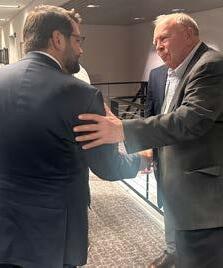
Somewhere in the clamor of early mornings at the barn, Tammi Fladager invisioned an outline of a children’s book and started a mission to bring ag education to Montana students.
“You’d go up to the barn, and this big commotion would just carry on. And I just kept thinking there’s a story here; who could write it?” said Fladager, creator of Happy Rach Wife Productions.
One day, the story came into focus, she started drawing, and before she knew it “The Noisy Ranch” was finished.
“I have a book. Now what do I do,” Fladager recalled thinking once she finished.
Fast forward two years, and she has four published books: “The Noisy Ranch,” “Koltiska’s Pumpkin Patch,” “What Do Ranchers Do?” and “Carol Drives a Tractor,” and there’s no more doubt about whether she’s supposed to be the author.
“When you figure out what your gift is and you use it, the time on the clock doesn’t matter at all. It’s so rewarding,” she said.
Although agriculture has been a thread throughout her life, it wasn’t until 2017, when Fladager and her husband, Curtis, moved to Peerless, that ag became central in her adult life. The couple made the move pursuing Curtis’ dream to be a fulltime rancher near where he grew up.
Continued on next page
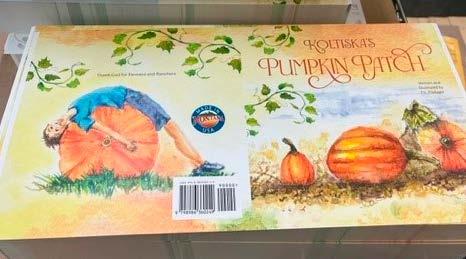 Author and illustrator Tammi Fladager has written several children’s books about agriculture. She recently used a grant from Montana Farmers Union Foundation to travel and distribute copies to schools around the state.
Author and illustrator Tammi Fladager has written several children’s books about agriculture. She recently used a grant from Montana Farmers Union Foundation to travel and distribute copies to schools around the state.

“Because I’ve lived both lives, and I see the disconnect on both sides. I just believe that that conversation needs to take place not on a soapbox, but it needs to be part of life,” Fladager said. “And that’s what I want to facilitate through my books.”
To help educate more people about ag, Fladager has been traveling the state, reading and gifting her books to students. A $2,500 grant from Montana Farmers Union Foundation has helped cover the costs. The MFU Foundation grant provided an emotional boost as well.
“I like my books a lot and believe in the mission, but to hear someone else say, ‘We really like what you’re doing, and we want to support you,’ is really good,” she said.
The grant was Fladager’s first connection with Montana Farmers Union, and she since has attended Women’s Conference and said she is now a member for life after experiencing the grassroots community of people passionate about agriculture and rural life that MFU fosters. “MFU really does care about the producers,” she said, adding MFU literally puts its money where its mouth is.
Because of the MFU Foundation grant, Fladager has travelled to four schools, as well as delivered or mailed books to another 18 schools, and even visited with the Montana Association of County Superintendents of Schools.
Her books open the door to conversations about ag from the origin of chocolate milk to what happens if no one collects chicken eggs to how food gets from the farm to the table. “Even if they go off to be a dentist, they’ll still have that background and have that awareness of where our food comes from.”
Currently, Fladager is working on several books geared toward pre-teens and teenagers, as well as honing her skills as an artist.
Continuing to write, illustrate, and promote her books to wider audiences is intimidating until she remembers her own advice that getting started is the toughest part.
 Tammi Fladager, is the author and illustrator of several children’s books about agriculture.
Tammi Fladager, is the author and illustrator of several children’s books about agriculture.
“The biggest advice I have is: You can try to ignore that calling, that gift. You can try. But the more you ignore it, the more dissatisfied you’re going to be. You’ve got to follow it. It’s not your gift to throw away. It’s so rewarding and fulfilling to follow that and do what you’re supposed to do.”
Fladager says she wants to empower children to “do what pulls your heart” with lessons from the farm that go deeper than the logistics of farming to the very core of rural communities’ success, including don’t put off what can be done today for tomorrow.
For example, “Carol’s Tractor” tells the story of a woman doing a non-traditional role on her farm.
“It’s empowering. It’s not about gender. It’s about you have a hand, help!” Fladager said.
Friction between urban and rural is likely to continue, but sharing agriculture through her books will help bridge the divide.
“I’m not by any means the solution,” Fladager said. “I’m just hoping to be the catalyst for the person who will make the difference.”


Tammi Fladager works with students. Fladager, an author/illustrator, has written several children’s books teaching about agriculture.
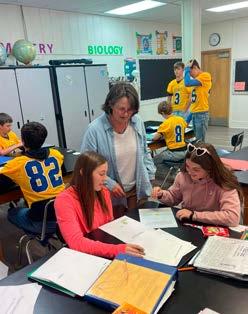

Montana Farmers Union Foundation is accepting applications through May 1 for $30,000 in grant funds. The Foundation’s grant program supports projects which align with its mission to create new opportunities and contribute to the growth and enhancement of Montana agriculture and rural communities. Projects must include an educational component for youth and/or adults with priority given to rural communities.
Northwest Food Hub Network GroupGAP Technical Assistance Provider Lindsay Gilmour conducts an on-farm food safety assessment with Julie Pavlock of Foothill Farm in St. Ignatius.When Max Smith realized there was a high demand for fresh, local produce during the coldest months of the year in Montana, he decided to rewrite the story of what’s possible.
“The idea that we would make most of our living in Montana in the wintertime, people – customers included – are astounded that we’re able to do this,” said Smith, who runs Winter Kissed Farm in Stevensville with his partner Katie Madden.
Originally,Winter Kissed was Missoula Grain and Vegetable, providing fresh vegetables through a CSA and farmers markets. High production sold through numerous channels didn’t translate into enough profit, though, and focus began to shift to pushing plants’ seasons to the outerlimits to meet customer demand during colder months.
Although CSA boxes are only distributed part of the year, the planting, growing, and harvesting is a near constant endeavor to accommodate member demand. CSA members receive greens into February and March.
In addition to outdoor plots,Winter Kissed has greenhouses Smith jokingly refers to as caterpillars.The structures are unheated, and employees only go in to them during a short period of warmth in the afternoon to harvest.
“The magic is that the plants have been exposed in the late fall and early winter to a series of storms and they get a knack for that condition,” Smith said.
A focus on soil health also sets the plants up for success, Smith added.“I would say, at any time, there’s only a quarter of it that’s being planted for cash crops, and we’re trying to really work on the soil for the remainder of it, so we don’t have beleaguered

Winter Kissed Farm in Stevensville specialized in providing fresh greens and other vegetables to CSA members throughout the winter months.
plants, so that every patch of soil is a little more predictable and reliable.”
Since the farm’s humble beginnings in 2013 on a plot of land procured by trading labor, the only constants have been change itself and a commitment to steady, wholistic improvement with a focus on quality of life and forms of production to build a greater resource base.
“We’re trying to do more than just sell our own food.We’re interested in other people’s success, and we’ve realized that our success really hinges on other people’s success too,” Smith said.
Over the years,Winter Kissed has raised employee wages, increased their farm infrastructure and solar energy, opened an online farm store, and partnered with other local producers to provide a broader range of products.
The successes have come alongside daunting challenges, including a wildfire that forced an evacuation in August of 2017 and a recent cancer diagnosis for Madden.
Thanks to their focused approach, Madden and Smith, their employees, and community have built a system that works under pressure and change.
Smith said they’re confident in the farm navigating the upcoming season, even with Madden undergoing cancer treatments.“The outpouring of support is definitely an illustration of how people feel about the farm and the path that we’ve taken.”
Additionally, the farm will restart a summer CSA program this year.
“It feels like our priorities have circled back with our customers,” Smith said, adding quality is key.
“We have a relationship with every one of the members. It’s this code that they’re willing to support our work at a higher cost if they get more value from the food.”
Likewise, quality employees are also key to the farm’s success.
“We feel comfortable enough with the people we have right now and the systems we’ve built to stretch ourselves,” Smith said, adding the push to provide higher pay and fourday workweeks has benefited the farm and employees alike.
To Smith, agriculture provides challenges and opportunities and plays a pivotal role in addressing global challenges like health care and climate change. Montana Farmers Union’s member-driven policy that addresses agriculture’s role in issues including those is what attracted him to the grassroots organization.
“I gain far more from banding together with an organization of farmers than I would ever gain alone.And I know where I would go if I needed to reach out to similarly minded people on a particular issue I might be confronted with,” he said.
His conviction in the possibility of agriculture keeps Smith motivated.“It’s not saving the world – farming – but it makes you feel like at least you’re moving the ball forward in managing a small space where you have control over how you’re affecting the Earth.

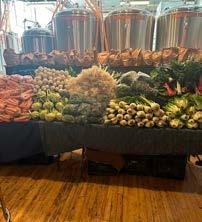



From top to bottom:

Winter Kissed Farm is busy growing vegetables throughout the year but specializes in providing sits CSA members with fresh greens during winter months.
Winter Kissed Farm in Stevensville produces vegetables for its CSA members Katie Madden, a partner in Winter Kissed Farm, poses with a pumpkin grown at the Stevensville operation. Winter Kissed Farm works with breweries to serve as CSA pick up spots.
Disclaimer: MCDC does not provide legal advice. The following is based on our working knowledge and understanding of the three entities. Legal advice when determining your entity structure is recommended.
The Montana Council of Cooperative and Montana Cooperative Development Center share a dedicated staff that serves the entire State of Montana, helping promote, sustain, and utilize the cooperative business model to address economic and community needs. Throughout our travels, we have noticed an alarming trend of people wanting to treat cooperatives as a charity or charitable organization. This article showcases the differences between cooperatives, non-profits, and mutually benefitted corporations.
A cooperative, or co-op, is owned and operated by its members for their mutual benefit. Depending on the type of cooperative, these members could be customers, employees, suppliers, residents, businesses, community organizations, or others. The main value behind cooperatives is democratic control, meaning each member has an equal say in the decision-making process, regardless of their level of investment or involvement. Cooperatives can operate in various sectors, such as agriculture, housing, retail, worker ownership, investments, and financial services.
Cooperatives are not charitable, though many cooperatives have tax exemptions through the IRS that categorize them into a 501 c entity. For example, Credit Unions can be 501c1 or 501c14, and Utilities can be 501c12. Agricultural cooperatives can apply for a 521c status through the IRS to obtain tax exemptions, though those exemptions should be weighed against the reporting requirements to ensure benefit.
Any surplus a cooperative generates is usually distributed to its members in proportion to their level of participation. These distributions are often referred to as patronage and can occur yearly throughout the life of the cooperative. The patronage each member receives is determined by the cooperative’s bylaws and state statutes. It may be influenced by factors such as the member’s level of involvement and the cooperative’s overall financial performance.
In the State of Montana, there are several forms of cooperatives allowed:
• Cooperative Association,
• Agricultural Associations,
• Cooperative Agricultural Marketing,
• Rural Cooperative Utilities, and
• Credit Unions and out-of-state cooperatives doing business in Montana.
However, regardless of the type of cooperative or focus, every cooperative operates under the 7 Guiding Principles and is an autonomous entity that is membership-owned, membership-operated, and membership-benefited. A good source to understand the 7 Guiding Principles is the International Cooperative Alliance’s website: https://ica. coop/en/cooperatives/cooperative-identity.
1. Voluntary, open membership, 2. Democratic member control, 3. Member economic participation, 4. Independence and autonomy, 5. Information, education, and training, 6. Cooperation between cooperatives, and 7. Concern for the community.

A non-profit organization is formed to pursue a specific social mission or advocate for a cause. If surplus revenue occurs, it is normally reinvested into the organization to further its mission. Non-profits can vary widely in their focus areas, including charitable, educational, religious, scientific, or artistic pursuits. They are typically tax-exempt under 501 c 3 (or other 501c statute) of the Internal Revenue Code in the United States, meaning they don’t pay federal income tax on the donations they receive.
A key difference between a non-profit and a cooperative is that non-profits do not have stock options for ownership or investment. Non-profit organizations do not distribute dividends to members or owners because they are not owned by individuals or shareholders in the traditional sense. Instead, any surplus revenue generated by the non-profit is normally reinvested into the organization to further its mission and programs. Non-profits may provide other types of benefits to their supporters or stakeholders, such as recognition, access to services or programs, or the satisfaction of contributing to a worthy cause.
Donors to non-profit organizations may receive tax benefits for their contributions, but that is not in lieu of an ownership stock, nor do the donors receive any form of dividends from their contributions to a non-profit.
A mutual benefit corporation is a type of non-profit organization that serves a specific group of members, such as a trade association, social club, or professional organization. Unlike other non-profits, which serve the public interest, mutual benefit corporations primarily serve the interests of their members. These organizations may apply for tax-exempt, but they operate under different regulations and guidelines than charitable non-profits. They
normally have a form of membership who often share a common interest or goal and come together to further that interest.
Mutual benefit corporations may distribute dividends or benefits to their members, but these distributions are typically based on membership dues or fees rather than business transactions or patronage. In Montana, mutually benefitted corporations may only distribute dividends during the organization’s dissolution, not annually. Members in a mutual benefit corporation do not own the entity like cooperative members own a cooperative.
Members of a mutual benefit corporation may receive benefits such as access to services, discounts on products or services, or other perks. The specific benefits offered to members of a mutual benefit corporation will depend on the organization’s purpose and the preferences of its members.
Additionally, it’s important to note that cooperatives are not primarily focused on providing aid or services to the broader community or addressing societal issues outside the needs of their members.
While cooperatives can have positive social impacts by empowering their members economically and fostering community development, their activities are not charitable. This distinction is significant for legal and regulatory purposes, as cooperatives operate under different frameworks and may not qualify for the same tax exemptions or benefits as charitable non-profits and mutual benefit corporations. Understanding the differences helps clarify the diverse landscape of organizational structures and highlights how groups can come together to address different societal needs and goals.


Be as brave, as you know brave to be …
Bravery, defined in those terms, changes everything, doesn’t it?
When I have the opportunity to speak about Montana Farmers Union, which is often, it is never without immense gratitude.
Gratitude for Montana Farmers Union teaching me to engage deeply, with courage to participate fully in transformational advocacy.
When I think about being as brave as I know brave to be, I think about Sarah Vogel, the farmers lawyer, losing her home, her car, sacrificing family time, and taking on unbelievable debt for a battle for 245,000 farms across 46 states. When she and I spoke over dinner at the MFU State Convention last October, Sarah was tearful over the farms that were lost. She was only able to save 6,000 family farms.
When I think about being as brave as I know brave to be, I think about Montana Premium Processing Cooperative and Glacier Processing Cooperative, along with the farmers, ranchers, community members, Montana Farmers Union, and other agencies that laid it all on the line to preserve rural communities and small family farms.
When I think about being as brave as I know brave to be, I think over the last two years and many member conversations. Some members are losing their farms, some members are on the verge of losing their farms, some members are working off-farm jobs to save their farms, some members have lost their farms.
When I think about being as brave as I know brave to be, I think of those that came before us. Can you imagine this country in only wagons, on horseback, with no fences, no prospects – just hope?
When I think about being as brave as I know brave to be … I think about today. I think of our small towns, rural communities, and small family farms. I think of trying to maintain our way of life and food security.
It’s time for those with a seat at the table to add more chairs. For those who want a seat, MFU will help you find one. For those on the fence, imagine life without rural America; imagine life without Montana.
History has not stopped writing itself. In 50 years, we will be writing about who and what preserved – or dismantled – rural communities and small family farms.
Find your seat.
Be as brave as you know brave to be.
Ambassador Carissa McNamara - Flathead


This spring marks the end of my first two years as a Membership Ambassador. When I first started with MFU, I was finishing my last semester at Carroll College in Helena. My research in Political Science brought me to the conclusion that grassroots politics were far more influential and accessible than anything at the Federal level of government.
That is how I was first attracted to Montana Farmers Union – the grassroots organization and its legislative priorities determined by members. While it has been a steep learning curve to become familiar with Ag-related issues, jargon, and general knowledge, I have discovered how much I respect and admire the Ag world.
My role as a Membership Ambassador encompasses much more than member organization or MFU policy, and it is cyclical. The types of engagement and programming I plan depend entirely on what the producers and community members in my region are doing. With the revving up of Spring, my work is shifting to plan Day Camps for kids and Ladies Who Ag meetings. Partnering with 4-H and FFA groups, I am hoping to provide my counties with educational and uplifting programs. Each community is
different, and I am still in the process of finding the right connections in them all.
My biggest ask from my members for 2024 is this: I need help getting in touch with the movers and shakers of your communities. Who would you recommend I reach out to who would help me bring your community together? Is there someone who is passionate about a certain project or issue that fits into the MFU mission? Who is a person who you admire for their willingness to invest in their community?
I live and work in Forsyth, and, even in my own community, I am just now feeling confident and knowledgeable with my network of contacts. I wish I could say the same for the other communities in my region. I will continue to build my network and reach out as best I can, but I am in the position of “I don’t know who I don’t know.”
I truly believe that MFU has the potential to positively influence every one of the communities in my region. My work will continue to propel me in that direction, but it will be accelerated tenfold with the help of my member’s connections and recommendations.
Reach me at edutton@montanafarmersunion.com or 406-201-5478.


Action needs to be taken. There are many obstacles and issues affecting farmers and ranchers, but there is one that has really been keeping me up at night trying to formulate a solution. Production ag lands are in jeopardy — in Montana and across the nation. The population growth in my region is happening so quickly. Farmers and ranchers are showing great concern as they feel a threat from people selling out around them and the newcomers having little understanding about our agricultural way of life.
I have been part of several conversations and presentations about conservation easements. These have been well attended and tough questions have been raised. There are several types of conservation easements, one of them being funded through a private land trust, NRCS, and the Farm Bill. I have concerns about any conservation easement. I worry about the funds falling through if a new Farm Bill is not passed. I wonder if these easements can be overturned by a presidential decree in future administrations. At the same time, I also believe that conservation easements could be an answer for some families. However, when negotiating the terms of the easement, families must think ahead to what the future farm could look like. Then be mindful of not making restrictions within the terms that could severely limit what future generations can do with the ag production lands.
Are there other ways we can work to preserve ag lands now and for future generations? I believe education and communication are vital and impactful ways anyone can make a difference. As agriculturists, we need to share our way of life and the importance of responsible, sustainable agriculture to our communities and beyond. This can be accomplished via agritourism, social media, one-on-one conversations, and increased involvement in MFU programs, just to name a few ways.
Where do you see yourself in a solution for preserving ag lands?
Ambassador Samantha Ferrat - Missouri HeadwatersAs staff, we value feedback from our members because it is crucial for us to hear what your communities need so that we can plan future events, from the topics at State Convention to any community-based events that we host or partner with other organizations. We are avid listeners and want to provide your communities with knowledge that could help make your lives a little easier.

We recognize that you are your communities’ foundation, and our ambassadors may only be in your counties every few weeks. Therefore, we only hear the basics of how we could assist you. If we don’t hear from our communities about what they would like to see, sometimes we have to “wing it” with programming and hope that it’s something important to you.
Currently, I am working in the Golden Triangle area to develop a workshop program focused on emergency response, especially in rural settings where it can take a significant amount of time for emergency help to arrive at farms or ranches. A similar program created by fellow Ambassador Eleanor Dutton has been popular in Eastern Montana. We will be covering topics such as how to stop bleeding, what to do in case of a fall, cardiac arrest, and more to ensure you are prepared in case of an emergency on your farm. Additionally, we will be providing a fire safety lesson – even with amazing local volunteer fire departments, it can take time for them to respond to a fire. Our fire safety lessons will teach you what to do if there is equipment on fire, how to get your family out safely, and how to prevent the spread of the fire.
What else do you want to learn more about? Do you want to learn more about Co-ops? Maybe you need a refresher course on parliamentary procedure? Or perhaps you would like to learn more about transitioning your family farm? Montana Farmers Union can help organize all these things, but we need to hear from you! Farmers Union is the largest and oldest grassroots organization focused on education, legislation, and cooperation. This can directly impact your community. We strive to help you make an impact within your communities by providing you with the tools you need. So, if there is any programming you would like to have, please reach out to me or your local ambassador. We would love to work with you to get something arranged.
Ambassador Jeri Copenhaver - Golden Triangle
The Farm to School Program in Montana is a vital initiative that bridges the gap between local agricultural producers and school communities. One of many items that Montana Farmers Union supports is the local food movement. I am excited that the MFU Ambassadors are collaborating with Jay Stagg, co-director and Farm to School coordinator at Montana Farm to School. I’m a-peeling to all the garden enthusiasts out there in this article.


The Farm to School program emphasizes sourcing local, fresh, and seasonal foods for school meals, including fruits, vegetables, dairy, meat, and grains. This promotes healthier eating habits among students while supporting local farmers and ranchers. The program provides educational opportunities for students to learn about agriculture, nutrition, and where their food comes from. This can include farm visits, gardening activities, cooking classes, and nutrition education programs integrated into the curriculum. By purchasing from local farmers and ranchers, the Farm to School program contributes to the local economy, keeping money circulating within the community and supporting local agriculture. Participating in the Farm to School program provides a reliable market for local farmers and ranchers, helping them diversify their income streams and sustain their operations. The Farm to School program contributes to the overall health and well-being of students, communities, and the environment by promoting healthy eating habits, supporting local farmers, and fostering connections between food, agriculture, and education.
I really dig school gardens. I am aware of only a handful of school gardens in Central and Northeastern Montana and one is in Hinsdale. Patti Armbrister, the Ag Education teacher in Hinsdale has had great success. Since 2011, the school gardens provide the fresh fruits and vegetables that the kids eat in the cafeteria, all grown right on school grounds. The gardens grow tomatoes, cucumbers, summer and winter squash, peppers, potatoes, garlic, and carrots, much of which is used fresh on the salad bar from August to November. The root vegetables are used throughout the year. Harlowton and Stanford also have school gardens. I would love to see more. The Farm to School Program offers an outline of how to get started. As your Ambassador, I can offer old-fashioned “roll-up your sleeves” help gardening or support with connecting your school to local producers if a garden is not feasible. Contact me because I’m radishing the opportunity to garden.
Water you waiting for? Let’s get gardening!
Ambassador Mary Jenni - Central MT
April already, huh? It feels like just a couple weeks ago was the Soil Health Symposium, now I’ve got to keep an eye out for when all the Farmers Markets start back up! If anyone else needs that kind of information there is a wonderful collection of Farmers Market locations, dates, and times in the Abundant Montana Food Guides. You can find them at your local FSA offices or feel free to ask your local MFU Ambassador, and we’ll get you sorted out.
Agrotourism season is also upon us, and it is a wonderful way to get folks who have never been on a farm or ranch operation out and about to see one and meet the folks who grow their food. This is also a great way to connect and what exactly goes into the entire operation and what it takes to ensure that local foods stay local. We always hear about and see the signs saying, “Shop Local” and this can help get into the why. It’s not an operation to make loads of money but to feed themselves and others and send their kids to college. It’s easy to say but it sets a different tone and really resonates with you when you hear it directly from the farmer or rancher.

We have our membership meetings and Ladies Who Ag events starting back up as well so make sure to come visit us and feel free to bring some folks along with you. The more people giving input about what you’d like to see in the area, the better it is for all of us. For those with an itching to head to more events please feel free to reach out, and we can certainly find something for everyone. From farm tours to workshops to youth Day Camps, there really is a ton of stuff to do. Big or small, from FFA to 4-H, your presence makes a big difference, and it makes our union much stronger when we gather to learn and share with each other.
Ambassador Skylar Williams - Yellowstone Bighorn
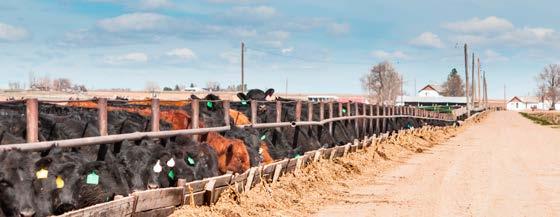
In late winter through spring, calves start dropping, lambing begins, prep for the planting season is well underway.
It’s the promise of the new beginning that we get each springtime where there is a lot of opportunity and hope – and as we all know too well, the unknown challenges. Whatever the challenges you may face in this new season, there are resources and people available to help you weather those storms.
When you’re run down in these busy farming and ranching seasons, MFU and our team is here to support you and lift you up. Whether it’s joining in virtual community with our Book Club or Lunch & Learn Webinars or meeting in person for one of our community gatherings (Ladies Who Ag, Day Camp/Summer Camp for youth, or an educational workshop), there is a community and network through MFU to help you restore, work through a challenge, or be supported in a new endeavor on your operation.
MFU has our Ambassador Team who are boots on the ground working on behalf of family farmers, ranchers, and supporting the vitality of our rural communities. Our Ambassador Team (see their updates pg.34) are planning educational events, opportunities to gather in community, and to hear directly from you about the issues that are important to you and your operation. We have great travel and advocacy benefits for when you need to get away and refresh on a quick break or fill your need to make your voice heard for farmers and ranchers. View full benefits, including retail and travel-related discounts, available from MFU and through National Farmers Union on MFU’s website.
Whether you are a seasoned farmer, a first-generation producer, or the next generation on your family’s farm, MFU has programs and opportunities to learn to fit all interests and needs (check out our events calendar to find something in your area), while keeping the voice of the family farm front and center on important federal and state issues like the Farm Bill, Packers and Stockyards Act rulemaking, and even hosting congressional candidate primary debates (find more info about those on our website)!
Another great resource during this busy season is your local MSU-Extension Agents, who work tirelessly on educational programs, events, and support resources to help you make your operation the most successful it can be. They also bring valuable youth programming and education through 4-H and other workshops geared for bringing the next generation to the table. Whether it’s soil health testing, education/concerns about grasshoppers,
cropping seminars, or information about feral swine, MSU Extension agents are valuable and critical partners in the field to the work you are doing, and they are there to serve you all as producers.
If you’re not sure who/where your extension office is, use this awesome resource to get connected:

Scan & Find Your MSU Extension Agent Today
We all get tired and frustrated when we’re up at all hours of the night checking calves, lambs, and getting ready to plant. This can take a mental toll on you and your family. Know that you are not alone in this experience, and there are resources available to help you through that time.
Beyond the Weather, from the Montana Department of Agriculture and the Northern Ag Network provide useful tools and resources when we get down on ourselves, and/ or just need some extra support and someone to talk to. I encourage you to utilize the resources and tools within the program if you feel the need:

Not only is it important and challenging to stay mentally strong during the busy spring, but making sure our physical health is a priority matters too. Sometimes it’s hard to find the time to fit that in when we’re low on sleep or getting kids to spring sporting events, but we want to provide a few resources to make that easier for you. MFU is proud, and excited to be working on a “Movements in Agriculture” video series for farmers and ranchers, with instructors who will assist us all with staying limber, refreshed, and in-tune to our physical health when we get run down and ragged. These will be available in the coming weeks as an online resource for you to utilize after a long day on the tractor, a tough pull in the calving barn, or to take a brain break.
I wish everyone a happy and healthy calving, lambing, and planting season this year. Know MFU is here to support you and connect you to resources that lift you up when the going gets tough – and to celebrate with you in the many joys of rural life that the hopeful and new season brings.

Montana Farmers Union recognizes that farming is a stressful line of work, and far too often, our communities don‘t have adequate resources to meet the mental health needs for farm families.

Working with a variety of organizations, MFU is proud to offer a variety of resources to members through National Farmers Union.These resources, including peer-to-peer support, are available to our members and their families to help mitigate farm stress and tackle the mental health crisis that‘s happening across the country.
Farm Family Wellness Alliance is one resource offered, providing mental health and wellness services through a multi-layer approach.The first layer is an online community called Togetherall.There you will find a broad array of peer-to-peer support and a library of self-paced resources.
Togetherall is a safe peer-to-peer online support community that is available 24/7 and is completely anonymous. Licensed and registered mental health clinicians, called Wall Guides, monitor the community to ensure the safety and anonymity of all members.
If needed, an additional layer of support is available through Personal Assistance Services, which provide access to many useful resources and tailored self-help courses covering topics such as anxiety, sleep, and depression.Togetherall can also refer and connect farm families to a suite of services provided by PAS for farm families who are seeking additional support.
Families can access one-on-one coaching and counseling, including counseling sessions to help manage anxiety, depression, stress, substance use, and more. PAS has many other resources to support a wide variety of life needs. Resource and coaching services include health and nutrition, tobacco cessation, organization and time management, education, career and retirement planning, childcare and elder care resources, and more.

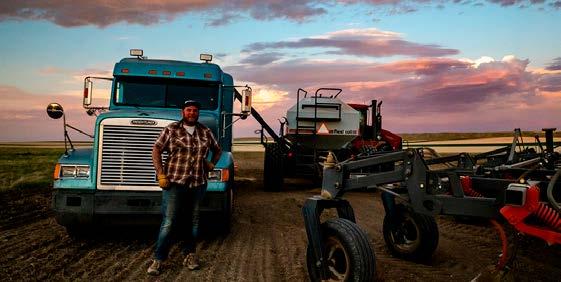 Member John Wicks President of the Liberty/Toole County Local
Member John Wicks President of the Liberty/Toole County Local

Name of Business:
Web Page Address:
Email:
Owner/Manager: Address:
City: State: Zip:
Phone Number:
Signature: Date:
$100 Paid ( ) or Please bill me! ( ) | Check here to sign up for a site-visit & social media promotion!
Please remit payment to: Montana Farmers Union, PO Box 2447, Great Falls, MT 59403
Need more information please call Toll Free: 1-800-234-4071



Born out of two workshops hosted at our 2024 Women’s Conferences, MFU is excited to be offering a new virtual resource series, Movement in Agriculture. This series will help you feel refreshed, limber, and in tune to your physical health in the busy seasons when your physical health often takes a back seat.
Through a series of instructor-led photos/demonstrations, resources, and videos producers can learn different levels of stretches, movements, and better ways to make long days in the field and barn not as physically tough. MFU will be hosting these resources on our website for producers and members to utilize at any time they need them.
With seeding and planting season upon us, most farmers will be spending long hours in the tractor. Despite the fact we are sitting still, tractor time is hard on our bodies, especially our spines. Long hours bouncing in even the smoothest field can cause compression between our vertebrae, and our posture starts to suffer sitting so much. Its important to get out at least once an hour and take a few minutes to walk around your equipment and check to make sure it‘s working.This will get the blood moving back into the lower half of the body as well.This quick stretch takes just a couple of minutes, but can make a big difference in not only in how the body feels, but also our mood and alertness.A simple stretch and a few deep breaths can do wonders to keep a farmer going on a long day.



When seated, pull your arms back and hold the frame around the back window. If you need a deeper stretch, lean forward a bit. You will feel this across your chest and a bit in your shoulders.
Using the ladder on the tractor, cross your arm in front and grab the handle. Gently pull away from that hand. You should feel the stretch in your upper back.

From the ground, grab the ladder and move your feet back. Stretch out until your arms are straight and your back is flat. You’ll feel the stretch along your spine and likely also feel a stretch in your hamstrings.


Standing on the step, hold the handle, and move your toes to the edge. Let your heels hang down to stretch the back of your leg, and then raise your heels up engage the calf and stretch the foot.

Disclaimer:This is not to replace or serve as a medical treatment or physical therapy. Please consult your medical provider for what is best for you. Keep your own needs and limitations of your health and body a main priority when utilizing these resources.

 Jon Tester, U.S. Senator
Jon Tester, U.S. Senator
With the recent warm weather many of us are starting to get anxious to get in the field. Some are done calving, some are well into calving and others haven’t started calving yet.
This winter’s low precipitation level is becoming too common as some folks have already reduced their herd size due to recent years less moisture resulting in less grass.
Those facts aside, Montana’s ranchers produce the best beef in the world, plain and simple. Whether it’s a good winter or not, we can count on producers to raise exceptional beef, and always hold their animals to the highest standards possible.
We know that foreign countries aren’t able to produce the same great tasting beef as folks in Montana, so if they’re going to sell beef in the United States, at a bare minimum they should be meeting the same health and safety standards placed on Montana’s ranchers.
Unfortunately, we’ve seen countries like Brazil and Paraguay fail to meet these standards of health and transparency time and time again. So when the Biden Administration made a decision to overturn a long-standing ban on Paraguayan beef despite some major animal health concerns, I teamed up with Republican Senator Mike Rounds of South Dakota to put a stop to it.
Late last year, we introduced legislation to suspend Paraguayan beef imports and establish a working group to evaluate the threat to food safety posed by their beef, and earlier this month we introduced a Congressional Review Act resolution to overturn the Biden Administration’s decision altogether.
Montana makes Beef and Beef makes Montana – we should never forget that, and I will continue to work to stop anyone that wants to weaken the U.S. cattle markets.
And speaking of beef – one thing is absolutely certain: beef ain’t beef unless it starts out as a cow.
By now, you’ve probably seen stories about artificial labgrown “meat” being produced and starting to be sold across the country – and while I believe folks ought to be able to eat what they want as long as its properly labeled, I don’t
think that’s what we should be serving in our schools.
That’s why earlier this year I teamed up again with Senator Rounds to introduce our bipartisan School Lunch Integrity Act, to ensure that the only meat being served in schools is meat that came from living, breathing animals – not labgrown substitutes.
Montana’s students ought to be receiving the best possible food in their breakfasts and lunches every day, and we know that Montana’s ranchers put out the highest quality product every year.
This bipartisan legislation will strengthen markets for Montana’s ranchers, ensure our children receive the highest quality nutrition in schools, and keep rural America strong –which should be a no-brainer.
Another no-brainer is strengthening enforcement of the Packers and Stockyards Act.
Folks in Montana know that capitalism is a great system, but it only works when there’s competition in the marketplace.
So when some of my colleagues proposed weakening the Packers and Stockyards Act in this year’s Agriculture Appropriations Bill, I knew it was time to stand up for Montana’s ranchers.
That’s why I teamed up with Republican Senator Chuck Grassley of Iowa in pressuring our colleagues to strengthen Packers and Stockyards – not weaken it.
Competition in the marketplace is essential for producers and consumers alike to receive fair prices – and any ag bill that comes before the Senate should be strengthening rural America, not the big packers.
I’m happy to report that not a single one of those efforts to weaken the Packers and Stockyards Act made it through the Senate.
Production agriculture drives our economy and ensures we have food security. Both are important and both are worth fighting for.
I’m still hoping for more moisture, wishing you all a successful planting season.
If I can ever be of any help, please don’t hesitate to reach out.
 Steve Daines, U.S. Senator
Steve Daines, U.S. Senator
Montana Farmers Union continues to deliver for Montana’s farmers and ranchers from policy advocacy, scholarship opportunities, educational resources, and everything in between your efforts will help safeguard Montana’s agricultural industry well into the future. I appreciate your work to collaborate with ag producers around the state, and I know these conversations will be invaluable to shaping policies at the national level that will support the longterm viability of agriculture across the Treasurer State. I will continue to fight for policies that favor our producers and minimize federal overreach.
The United States has maintained strong relationships with overseas trading partners for ages, but the attrition of market access for U.S. agricultural exports must be addressed immediately to ensure we remain competitive on a global scale. While macroeconomic factors can play a significant role in the state of trade, the Biden administration has failed to secure a favorable trade landscape for our ag producers, and this is evidenced by the sharp decline in U.S. exports. I recently joined a letter with Senate colleagues to U.S. Trade Representative Tai and U.S. Department of Agriculture Secretary Vilsack to relay my concerns with the declining state of U.S. ag exports. The current trajectory of market access for our ag exports underscores the need for the Biden administration to take action immediately.
Another top of mind issue is the status of the grizzly bear here in Montana. Over a year ago, the U.S. Fish and Wildlife Service announced the start of a 12-month review period to look at delisting the grizzly bear in the Greater Yellowstone Ecosystem and the Northern Continental Divide Ecosystem. Science plainly shows these two grizzly bear populations have made a full and robust recovery, well beyond recovery targets, and should therefore be delisted so we can hand over management of the recovered populations to the states.
Since the delisting of the gray wolf back in 2011, the State of Montana has proven its effectiveness in properly managing the species, and should now be afforded full management authority of the recovered GYE and NCDE grizzly bear. The GYE grizzly bear population has now been delisted twice by the FWS, but activist judges continue to use the Endangered Species Act to block the delisting and prevent the state from using commonsense management of the natural resources and diverse wildlife that the Treasure State is known for. I will continue fighting to ensure the state can finally move forward with proper conservation tools. Montanans know how to manage their wildlife better than D.C. bureaucrats.
Although there are countless ways that D.C. bureaucrats can interject their one-size-fits-all rules that make it difficult for folks to turn a profit, there are just as many ways to strengthen our state and nation’s agricultural industry, and the time to prioritize tangible solutions is now. I appreciate your feedback, and I commend your efforts to include every man and woman from grassroots Montana who wants their concerns to be heard so we can achieve real Montana-led solutions.







Bringing agriculture into the 21st Century, and producing crops and livestock while addressing climate change



 By Nick Gevock
By Nick Gevock

We hear a lot about climate change today, in everything from the cars we drive to the products we buy, and the energy we use to power our homes, businesses, and schools. Of course, farmers and ranchers are no exception, and undoubtedly will be affected by many aspects of the push toward a cleaner, greener, less carbon-dependent economy. But what exactly does that mean for working farms and ranches?
The term Climate-Smart Agriculture was first developed by the United Nations in a 2010 report. But before people start attributing this to a global ploy for one-world government, it’s important to note that the tenents of the policy recognize the important role of agriculture in addressing climate change, while feeding humanity. That policy aligns well with Montana Farmers Union’s grassroots, member-driven policy. Its position on climate resiliency acknowledges the vital role that farmers and ranchers play in addressing climate. It’s laid out in a few principles to improve climate resilience:
- We recognize the importance of soil health
- Promote developing crops, varieties, and animal breeds that perform under extreme circumstances
- Partner with rural communities and utilities to increase their use of renewable energy
- Encourage the expansion of biofuels
- Support Risk Management Agency (RMA) to credit cover crops instead of penalizing their use.
-Support RMA programs to insure all crops grown in Montana
The United Nations report acknowledged that farming
and ranching were adversely impacted by a warmer, drier climate, while also contributing to increased carbon emissions, and to our warming climate.
“Basically, the report started the climate smart wave across the country,” said Kelly Barkell, Assistant State Conservationist with the U.S. Natural Resources Conservation Service, based in Bozeman.
It also laid out principles that should guide the future of agriculture for its long-term resilience and profitability – a road map to ensure that farming and ranching practices recognize the effects climate change will have on their operations and adapt to ensure their long-term viability while also doing things to reduce carbon emissions.
The three main goals of climate-smart agriculture are:
-Increased productivity, meaning sustainably intensifying yields
-Enhanced resilience, or adapting to climate change
-Reduced emissions, which is mitigating greenhouse gas emissions
Those buzzwords all sound like good goals. But for the Montana farmer and rancher, what do these practices look like?
Adopting climate-smart agriculture on any individual farm or ranch is tailored to their ag operation, Barkell says. It’s her job to run the federal programs that provide assistance to farmers and ranchers to put these practices into place, on-the-ground, on their operation.
She says it could be any number of things. Those include cover crops, conservation crop rotations, reducing tilling, and no-till farming. There are also specific practices for
forestry, many of which are being integrated into logging operations in Montana.
There are plenty of practices for livestock producers, too. For example, ranchers can put into practice grazing regimens that help improve the vegetation and protect some important areas to better streamflows.
“Maybe it’s more intensive grazing management along riparian areas, enhancements or activities,” Barkell said.
The most important thing is that these practices influence both an agricultural operation’s production, but also carbon emissions. Barkell said the U.S. Department of Agriculture has invested a great deal into research on these methods and is working to make sure they actually make a difference in combating climate change.
“There’s a lot of scientific data to support these practices, and if they do these practices, it will reduce key greenhouse gas emissions like nitrous oxide, methane, and carbon dioxide that are associated with ag production,” she said. “These practices will help mitigate that, and every year we evaluate the practices on this list. Some might be removed, and some might be added.”
Regardless of what these practices might look like for any individual farm or ranch, Barkell says one common thread runs through all of them: Federal support is there. The standing Farm Service Agency and Natural Resource Conservation Service programs and funding have been supplemented with a massive influx of money. That’s coming from the Inflation Reduction Act, signed into law by President Biden in August 2022.
The bill has numerous provisions to address climate change, lower carbon emissions, encourage energy efficiency, and make our country far greener. It spans from appliances to electric cars.
And Barkell says there are numerous provisions in the bill for agriculture.
“It’s a great opportunity for the producers in Montana,” she said. “Historically in Montana we have more money than we’ve ever seen in our lifetime – it’s outstanding.”
For example, this year there is $27 million available in Montana through the Environmental Quality Improvement Program (EQIP). And the Conservation Stewardship Program, which is the largest in Montana in terms of acreage covered, is flush with public investment too. The additional funding from the IRA is allocated for fiscal years 2023-26, so right now those monies are being spent and will continue for another three years.
That funding is in addition to monies available through the Farm Bill. Currently that’s being hammered out for the next five-year period.
Continued on next page

Continued from previous page
When it comes to FSA programs to implement climate smart programs, the long-running Conservation Reserve Program tops the list, says Elise Gaboury, a public affairs specialist based in Bozeman. It aims to conserve key lands near streams and wetlands, establish trees and native grasses, and ultimately keep carbon out of the atmosphere. The program has other benefits, too, including for wildlife and water quality.
“It is one of the most important tools in our nation’s fight to reduce the worst impacts of climate change on our farmers, ranchers, and foresters,” Gaboury said. “Through CRP, producers improve water quality, reduce soil erosion, and create or restore habitat for wildlife.”
But CRP has its critics, too, for the effect it has had on some rural communities. And the program is not as large as it used to be, after topping out at more than 2.1 million acres enrolled in 2006. It has trended down, but after a revamp last year saw more interest, as FSA added more than 275,000 acres into CRP.
None the less, CRP is just one of the many options available to assist farmers and ranchers who want to implement Climate Smart practices on their land, Gaboury says.
The important thing for Montana farmers and ranchers to understand about the NRCS programs that can help is that they can be applied for throughout the year, Barkell said. They are distributed as different batches of money at specific times, but producers can come in any time to learn about them and get help applying.
Like so many NRCS programs, the best place to start is your local office. Barkell said they know which programs are best suited to their counties, based on the needs there. That’s the case whether it applies to crop production, grazing, irrigation, or other practices.
Barkell stresses that all these incentive programs are just that – incentives that are not mandatory. Each farmer and rancher must look at their operation and decide the best fit. But if they want to move forward, the resources are there, and local staff are ready to help.
“Get involved at the local level, because that’s how we set our conservation work,” she said. “This is all voluntary, this is stuff producers want to do on their operations – it’s helping them, at the same time it’s helping the environment.”
For more information about the programs and assistance available to implement climate smart agriculture scan the QR Code!

For more information abouit agricultural climate change in your county scan the Qr Code!




Francisco Gamboa Herrera works as a Rosebud and Treasure Counties Agriculture and 4-H Extension Agent with Montana State University. He holds a bachelor‘s degree in agronomy, a master‘s degree in agribusiness management, and has previously worked as a veterinarian assistant with a large animals emphasis. Born in Costa Rica, he moved to Montana in May 2023. Previously, he worked in the coffee, dairy, livestock (beef and water buffalo), commercial pest control, forestry, and cocoa industries in Costa Rica.
Marsha Goetting, Ph.D., is a MSU Extension Family Economics Specialist.
Nick Gevock has been engaged in wildlife and lands conservation issues for over two decades in Montana. He worked as a reporter in Bozeman and Butte for longer than 11 years, covering local government, natural resources, agriculture, and outdoor recreation. He moved into policy work over a decade ago, serving as the conservation director for the Montana Wildlife Federation, where he worked on key wildlife and lands issues on the local, state, and federal level. Currently he serves as a Field Organizing Strategist for Northern Rockies Wildlands and Wildlife for the Sierra Club.
Tracy McIntyre is a Eureka native who understands the importance of economic development in Montana’s communities. She is currently executive director of the Montana Cooperative Development Center.
Paul Nugent specializes in agriculture engineering. Along with other agriculture faculty, Paul will help to create precision ag courses forMSUstudents and aid in the development of a future minor.
Alice Miller is a press relations specialist with Montana Farmers Union. Originally from the East Coast, she roamed The West as a newspaper reporter before settling down on her husband’s Hi-Line family farm and ranch.
Rachel Prevost is the Membership Services and Government Affairs Director at Montana Farmers Union. Prevost grew up on her family’s farm and ranch in Northeastern Montana and was a 10-year member of 4-H and 5-year member of Montana FFA. Prevost studied Political Science, Communication Studies, and Public Relations for her undergraduate degrees and cares deeply about the vitality of our rural communities and the sustainability of family farms for generations to come.
Matthew Hauk is the full time Education Director for Montana Farmers Union. He formerly worked as a high school science teacher and administrator for several schools in Montana. He also worked at Dawson Community College and the University of Providence as a member of their TRIO Department, including teaching classes as an adjunct faculty member.





